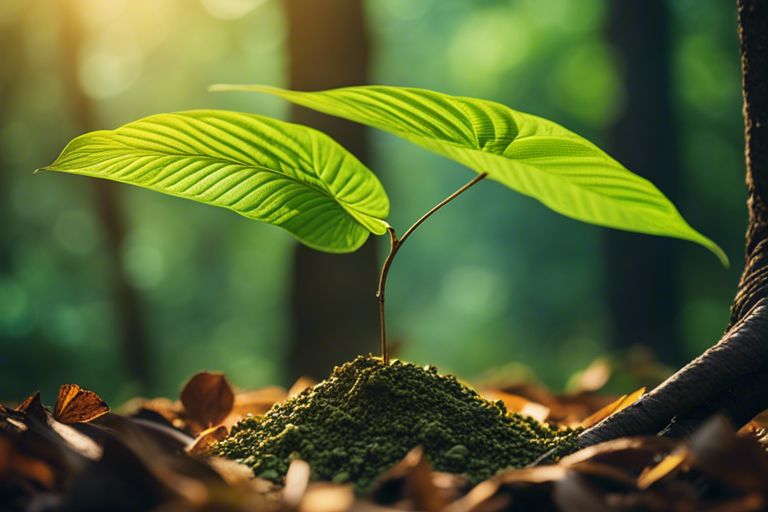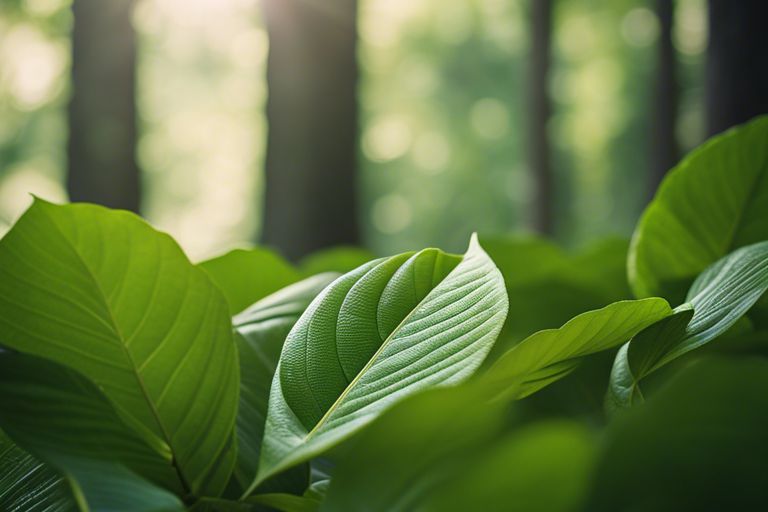With its origins rooted in Southeast Asia, kratom has a long history of traditional use by indigenous peoples for various purposes. This powerful plant, known scientifically as Mitragyna speciosa, has been utilized for centuries for its stimulating and pain-relieving properties. Understanding the original uses of kratom sheds light on its cultural significance and potential benefits.
Key Takeaways:
- Traditional Medicinal Purposes: Kratom has been used for centuries in Southeast Asia as a natural remedy for pain relief, energy boosting, and managing various health conditions.
- Stimulant and Pain Relief Properties: The leaves of the Kratom plant contain alkaloids that act on the opioid receptors in the brain, providing both stimulant and pain-relieving effects.
- Cultural and Social Practices: Kratom has also been traditionally used in social settings and ceremonies in Southeast Asian communities to promote sociability and enhance mood.

Origins of Kratom
The origins of Kratom can be traced back to Southeast Asia, where it has been used for centuries by indigenous communities for various purposes.
Southeast Asian Roots
One of the primary regions where Kratom originated is in Southeast Asia, particularly in countries like Thailand, Malaysia, Indonesia, and Papua New Guinea. In these regions, Kratom has been traditionally used by locals for its stimulating and pain-relieving properties. It has been consumed in various forms, such as chewing the leaves or brewing them into a tea.
Historical Records of Kratom Use
Asian historical records dating back several centuries mention the use of Kratom for its medicinal properties. It was commonly used by manual laborers and farmers to combat fatigue, increase energy levels, and manage pain. This herb was also used during ceremonies and rituals as a traditional remedy for various ailments.
Traditional Medicinal Uses
You may be wondering what kratom is originally used for. Kratom has a long history of traditional medicinal use in its native Southeast Asia. Here are some of the traditional uses of kratom:
Pain Relief and Analgesia
On the islands of Malaysia and Thailand, kratom leaves have been used for centuries for their pain-relieving properties. The active compounds in kratom, such as mitragynine and 7-hydroxymitragynine, interact with opioid receptors in the brain, providing relief from both acute and chronic pain.
Energy Boost and Stimulant
To the locals in Southeast Asia, kratom is also valued for its energizing effects. Kratom leaves can boost energy levels, increase focus, and enhance productivity. This makes kratom a popular choice for laborers and farmers who need to work long hours in the fields.
The stimulating effects of kratom are comparable to coffee but with a smoother and more sustained energy boost.
Opiate Withdrawal and Addiction
Pain management and addiction treatment are among the key traditional uses of kratom. Kratom’s alkaloids can alleviate withdrawal symptoms and cravings associated with opioid addiction. In Southeast Asia, kratom has been used as a natural alternative to help wean individuals off opiates.
It is important to note that while kratom can be beneficial in managing pain and aiding in addiction recovery, it also carries risks of dependence and abuse if not used responsibly.
Cultural Significance
Kratom in Thai Culture
Kratom has deep roots in Thai culture, where it has been used for centuries for its medicinal and recreational properties. In Thailand, Kratom is traditionally consumed by laborers to boost energy levels and alleviate fatigue. It is also a common ingredient in traditional medicine and cultural ceremonies. The plant holds a special place in Thai society, with many believing in its spiritual and healing powers.
Kratom in Malaysian Culture
Significance Kedah, a state in Malaysia, is known for its long history of cultivating and using Kratom. The plant is an integral part of Malaysian culture, where it is used for various purposes, including pain relief, relaxation, and social gatherings. Kratom leaves are often brewed into a tea or chewed for their stimulating effects. Its availability and cultural acceptance make Kratom a significant part of daily life for many Malaysians.
Kratom in Indonesian Culture
Thai In Indonesia, Kratom plays a vital role in traditional ceremonies and rituals. It is believed to have healing properties and is used to enhance concentration and endurance. Kratom is also a symbol of hospitality in Indonesian culture, with hosts offering it to guests as a gesture of welcome and friendship. The plant’s presence in daily life reflects its cultural importance and long-standing history in Indonesia.
Labor and Work-Related Uses
Once again, it is crucial to note that according to Kratom: Unsafe and ineffective, the use of kratom for labor and work-related purposes may pose serious health risks and is not recommended by medical professionals.
Agricultural and Farming Communities
Farming communities have historically turned to kratom for its energizing effects, using it to combat fatigue during long hours of labor in the fields. Kratom leaves were chewed or brewed into tea to provide a boost of energy and endurance, allowing farmers to work more efficiently under the hot sun. However, it is important to acknowledge that kratom can be addictive and lead to serious health issues with prolonged use.
Construction and Manual Laborers
Work-related use of kratom is common among construction workers and manual laborers who seek relief from physical strain and pain. The stimulating properties of kratom have been utilized to improve focus and productivity on job sites. However, it is crucial to understand that relying on kratom for pain management can mask underlying health issues and may lead to dependency.
Understanding the risks associated with using kratom in labor-intensive professions is important to ensure the well-being of workers and prevent potential harm from prolonged consumption.
Traditional Healers and Medicine Men
Healers in some cultures have incorporated kratom into traditional healing practices, believing in its analgesic and mood-enhancing properties. Kratom was used to treat a variety of ailments, including pain, fatigue, and stress, with healers preparing specific doses based on individual needs. While kratom may offer temporary relief, it is crucial to remember that unregulated use can have harmful effects on overall health and well-being if not monitored carefully.
Spiritual and Religious Significance
Now, let’s explore the spiritual and religious significance of Kratom. Throughout history, Kratom has been utilized in various spiritual practices and ceremonies due to its unique psychoactive properties.
Kratom in Shamanic Practices
One way Kratom has been used is in shamanic practices. Shamans, who are spiritual guides and healers, have traditionally used Kratom during rituals to induce altered states of consciousness and facilitate spiritual journeys. The plant’s psychoactive compounds are believed to help shamans connect with the spiritual realm and gain insights into healing practices.
Kratom in Buddhist and Hindu Rituals
With its origins in Southeast Asia, Kratom has also been a part of Buddhist and Hindu rituals. In these traditions, Kratom leaves are often brewed into a tea and consumed by practitioners seeking enhanced focus during meditation or long periods of prayer. For instance, monks in Thailand have been known to use Kratom to increase their energy levels and maintain mental clarity during long hours of meditation.
Kratom in Animist Beliefs
Buddhist and Hindu practitioners are not the only ones who have incorporated Kratom into their beliefs. In various animist cultures, Kratom is revered for its alleged protective and healing properties. For example, in certain tribes in Malaysia, Kratom leaves are thought to ward off evil spirits and illnesses, making it an crucial component in spiritual ceremonies and rites of passage.
To research deeper into the topic of Kratom’s role in animist beliefs, it’s important to note that some communities believe that Kratom trees are inhabited by spirits that protect the land and its people from harm. This spiritual connection has elevated Kratom to a revered status in animist practices.

How is Kratom traditionally used for its analgesic effects?
For centuries, people in Southeast Asia have been exploring kratom’s analgesic effects by chewing the leaves or brewing them into a tea to alleviate pain. Traditionally used by workers to combat physical labor pain, kratom has gained popularity for its natural pain-relieving properties in various cultures.
Modern Applications and Misconceptions
Kratom as a Recreational Drug
All over the world, kratom has gained popularity as a recreational drug, with users seeking its mood-lifting and pain-relieving effects. It is often brewed as a tea or chewed for its stimulant properties, akin to coffee, at low doses. At higher doses, it can produce sedative effects, leading some individuals to use it as an alternative to illicit substances. However, the recreational use of kratom has raised concerns due to its potential for addiction and adverse effects when consumed in large quantities.
Kratom as a Treatment for Opioid Addiction
One of the most significant and controversial modern applications of kratom is its use in treating opioid addiction. Proponents argue that kratom can help alleviate withdrawal symptoms and cravings associated with opioid dependence. However, the lack of regulation and scientific evidence supporting its efficacy and safety have sparked debates within the medical community.
Moreover, kratom is not approved by the FDA for any medical use, including the treatment of opioid addiction. The potential risks of dependency and adverse effects associated with kratom emphasize the need for further research to determine its role in addiction treatment.
Kratom’s Legal Status and Controversies
With the surge in popularity of kratom for recreational and medicinal purposes, its legal status has become a contentious issue. While it remains legal in many countries, including the United States, some regions have banned its sale and distribution due to safety concerns and a lack of regulatory oversight. The controversy surrounding kratom lies in the conflicting opinions regarding its potential benefits and risks, leading to ongoing debates about whether it should be classified as a controlled substance.
Kratom continues to be at the center of legal and ethical discussions, with advocates highlighting its potential therapeutic value and detractors emphasizing the need for caution and further research to determine its long-term effects on human health.
Summing up
Hence, as we have learned from this informative piece, kratom was originally used for its stimulant effects in Southeast Asia, where it has a long-standing cultural and medicinal history. It was traditionally consumed by laborers and farmers to help boost energy levels and alleviate pain. Understanding the historical context of kratom’s usage gives us insight into its traditional applications and provides a foundation for the ongoing discussion surrounding its potential benefits and risks.
Is Kratom’s Original Use Related to Its Potential to Cause Constipation in Adults?
Kratom and constipation effects have been a topic of interest for researchers. Some believe that kratom’s original use as a traditional herbal remedy in Southeast Asia may be related to its potential to cause constipation in adults. Further studies are needed to fully understand the link between kratom and constipation effects.
FAQ
Q: What is Kratom?
A: Kratom is a tropical tree native to Southeast Asia, particularly in countries like Thailand, Malaysia, Indonesia, and Papua New Guinea.
Q: What is Kratom traditionally used for?
A: Traditionally, Kratom has been used for centuries by indigenous people for its stimulant and pain-relieving properties.
Q: How is Kratom consumed?
A: Kratom leaves can be chewed, brewed into tea, or ground into a powder and ingested. It can also be smoked or vaporized.
Q: What are the main active compounds in Kratom?
A: The main active compounds in Kratom are mitragynine and 7-hydroxymitragynine, which interact with opioid receptors in the brain to produce stimulating and pain-relieving effects.
Q: What are some traditional uses of Kratom?
A: Traditional uses of Kratom include boosting energy levels, increasing focus and productivity, managing pain, and alleviating symptoms of anxiety and depression.








